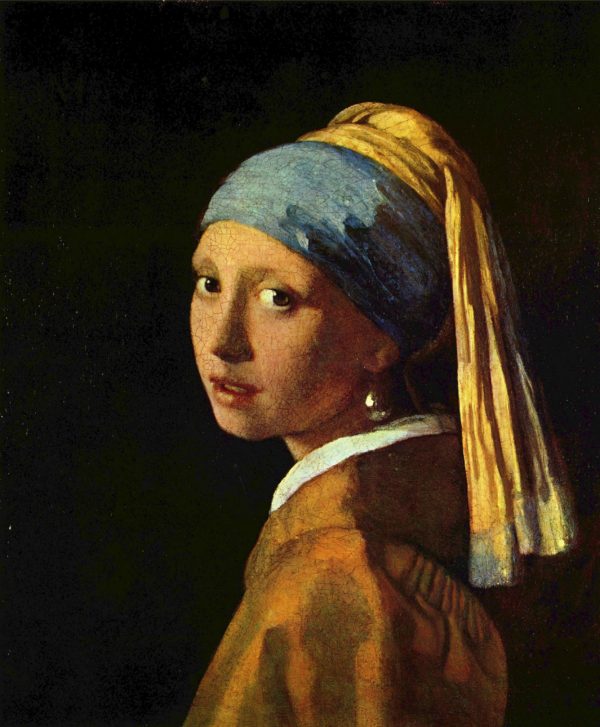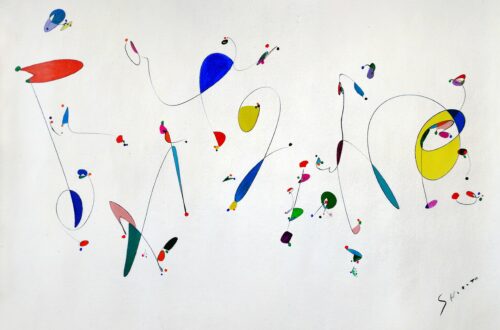Johannes Vermeer’s enigmatic, mysterious Girl With a Pearl Earring has captivated viewers since its creation in 1655. Known as the “Mona Lisa of the North”, the enigmatic subject of the painting has been debated for hundreds of years. Who was the girl with a pearl earring and what makes this painting so extraordinary?
The Life of Johannes Vermeer
Johannes Vermeer was born in the Dutch town of Delft in October 1632. His father, Reyner Jansz, was an art dealer as well as a producer of caffa (a fine satin fabric). Not much is known about Vermeer’s early career as an artist. Although it has been suggested that he studied under Carel Fabritius or Leonaert Bramer, it has also been theorized that Vermeer was a self-taught artist, taking influences from his father’s art connections.
In 1653 Vermeer joined the Guild of Saint Luke, a trade association for painters. This provided him with a great deal of connections, and he became well-known for his paintings (although it has been noted that he probably only painted around three artworks per year).

Because the Vermeer family were quite wealthy – Vermeer inherited both the family inn and his father’s art-dealing business when his father passed – Vermeer was in the fortunate position of being able to paint for pleasure, rather than needing to paint to support his family. He was known for using expensive materials in his artwork, such as lapis lazuli for the skirt of The Milkmaid.
While Vermeer enjoyed a privileged life, even he was not immune to “The Year of Disaster” that hit the Netherlands in 1672. The Dutch Republic was invaded by French, German and British armies, leading to an economic crash. The art scene was hit hard, and Vermeer struggled to provide for his family, which at this point consisted of his wife, her mother, and eleven children. He quickly accrued a huge amount of debt, and was even caught stealing from his mother-in-law.
Vermeer succumbed to his increasing madness and depression and died of a heart attack in 1675. His wife wrote, “…during the ruinous war with France he not only was unable to sell any of his art but also, to his great detriment, was left sitting with the paintings of other masters that he was dealing in. As a result and owing to the great burden of his children having no means of his own, he lapsed into such decay and decadence, which he had so taken to heart that, as if he had fallen into a frenzy in a day and a half he went from being healthy to being dead.”
What makes Girl with a Pearl Earring so special?
Throughout his life, Vermeer produced around forty images of women, leading historians to theorize he was particularly interested in the role women played in society. In particular, Girl with a Pearl Earring has delighted and captivated viewers since the 16th century.

Little is known about Girl with a Pearl Earring, and perhaps the mystery behind the artwork is part of the reason why it has become known as the “Dutch Mona Lisa”. In the painting, we can see a young woman slightly turned towards the viewer, lips parted, eyes bright. The painting is referred to as a tronie: not exactly a portrait, but an image that captures a stock character in costume, or with an exaggerated expression. Tronies represented characteristics of foreign lands, which were becoming known in Dutch society through their booming trade business. The subject is dressed in a blue and gold turban, a gold jacket with a white collar visible, and of course, the titular pearl earring.
Compared to Vermeer’s other pieces, the composition of Girl with a Pearl Earring is quite simple. Unlike his other portraits of women, the subject is not performing a daily task, unaware of the artist painting her (for example, Woman in Blue Reading a Letter or The Milkmaid). Here, the girl’s gaze is penetrating and engaging. There is no setting visible in the background, which further serves to portray Vermeer’s mastery of light. He uses light to create contours and forms – seen most clearly on the face of the subject. He does not use a line to separate her nose from her cheek, instead using delicate light tones to define them. Vermeer’s skill at depicting light can also be seen in the reflection in the girl’s lips and, of course, the light reflected from her earring.
And why the pearl earring? It has been suggested that, during his conversion to Christianity, Vermeer had read Introduction to the Devout Life by St Francis de Sales. De Sales wrote that women should protect their ears from hearing anything untowards, and only listen to chaste words – the “oriental pearls of the gospel”. Perhaps the pearl earring in the artwork represents chastity, with the ‘oriental’ being represented by the girl’s turban.
Who was the girl with a pearl earring?
Although there have been theories floated since the painting’s creation, nobody is certain who the girl with a pearl earring actually is. The mystery surrounding the painting is part of the reason why it remains so beloved today.
The girl in the artwork could be Vermeer’s oldest daughter Maria, who would have been about twelve years old at the time of painting. It has also been suggested that Maria modeled for Art of Painting and Young Woman with a Pearl Necklace. Interestingly, Maria may also have been responsible for work attributed to her father, including Mistress and Maid, Girl with a Red Hat, and Woman with a Lute.

However, the fact that the painting is a tronie, rather than a portrait, means that perhaps Vermeer was painting from his imagination. We will probably never know who the girl with a pearl earring is. Tracy Chevalier, the author of a novel fictionalizing the story behind the painting, says, “The image works because it is unresolved… You can’t ever answer the question of what she’s thinking or how she’s feeling. If it were resolved, then you’d move onto the next painting. But it isn’t, so you turn back to it again and again, trying to unlock that mystery. That’s what all masterpieces do: we long to understand them, but we never will.”
Vermeer’s Legacy
Although he enjoyed success during his lifetime, Vermeer disappeared from the art world until the 19th century. It was around this period that artists such as Manét started to examine how they could capture the minutiae of everyday life in a stylized, beautiful way – something that Vermeer excelled at. He is now considered to be one of the great artists of the Dutch Golden Age.
Girl with a Pearl Earring was again thrust into the limelight after the publication of Tracy Chevalier’s novel in 1999. Inspired by the “ambiguous look” on the subject’s face, Chevalier created a story based on the theory that the girl in the piece was Vermeer’s mistress, a maid named Griet. The novel was later developed into a film starring Colin Firth as Vermeer and Scarlett Johanneson as Griet.


















2 Comments
Pingback:
Pingback: